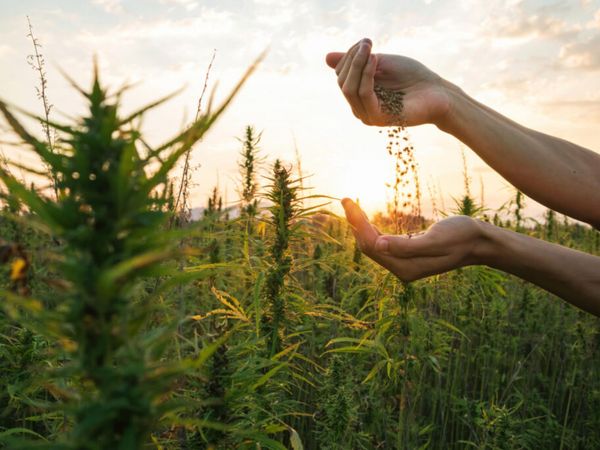
Here’s a party trick for nerds and foodies: name as many types of apple as you can. If you start trailing off after listing 10, it is understandable. But there are far, far more.
Australia has upwards of 200 apple varieties growing in heirloom orchards and in people’s backyards – though the exact number is hard to pinpoint. These varieties originate from Europe, the United States and Japan and have names like Belle de Boskoop, Rhode Island Greening and Akane. Apple and Pear Australia tracks 18 commercial apple cultivars, including the most popular Red Delicious, Granny Smith and Pink Lady varieties.
Some are going out of fashion, or are even at risk of extinction because modern-day customers prioritise consistency, and varieties that are durable can better withstand complex supply chains and transport over long distances. So it has been left up to niche organic growers and volunteers to preserve older, more delicate varieties in our fruit bowls and collective memories.
Katie Finlay from Grow Great Fruit in Victoria says there’s renewed interest in growing heritage fruits, as the pandemic created a backyard gardening boom. “We have a heritage orchard business, but we also run courses because people kept asking us how to manage their fruit trees.”

Growing apples can be hard graft; often literally. If you like a variety, you cannot simply plant the seeds. Akane apple seeds do not produce Akane apples. Instead, you have to graft cuttings from the tree on to a rootstock. Once you have a fruiting tree, it will require specialised pruning to shield fruits from the elements: too much sun will burn an apple, but if it cannot dry after a rainstorm, it will rot. It is finicky, but Finlay has met plenty of people willing to learn. She says, pre-Covid, she had an average of 25 people enrolling in her classes. “Now, over 500 people are registered for the latest online course.”
She’s optimistic about this boom in popularity. More biodiversity helps with food security. “The more varieties you grow, the more you stand a chance in changing climates,” Finlay says. “Bramley and Cox’s Orange Pippin are popular varieties in England, but they both struggle a bit in Australian conditions. Some seasons are just not cold enough for them.”
The same goes for diseases. Brenton Kortman from Rare Fruit Society of South Australia explains: “I have Pink Lady and Emperor Alexander varieties growing side by side. This year, the Pink Lady was covered in black spots but the Emperor Alexander … was fine.”
Heritage apples also extend the fruit’s season beyond the autumn harvest. Kortman picks his first apple at Christmas and the last in early winter, because different varieties have different harvesting periods. “Not many people know that you can harvest apples in winter too. Rokewood, for example, is a winter apple,” he says.
The most obvious reason to preserve heritage apples, though, is the taste. Kortman is particularly enthusiastic about this. “Apricots have similar shape, colour and taste but apples have a range of flavour, size, shape and colour. McIntosh apple has hints of strawberry. Yellow Transparent is a Russian apple that tastes like lemon sherbet. I also grow Winter Banana apple, which smells a bit like banana. That’s how I know when it is ripe.”

Farmers’ markets, particularly those in apple-growing regions such as the Adelaide Hills and Tasmania, as well as inner-city spots like Melbourne’s Victoria Market, are among the places that carry heritage varieties, but these lesser-known apples rarely make it to supermarket shelves.
Finlay and Kortman both lament how commercial apples have become uniform in flavour and colour because they are bred for durability. “Take the variety, Gravenstein. You pick it in February and it stays crunchy and tart for about two weeks. It is suitable for farmers’ markets but not large agricultural practices,” Finlay says.

As a general rule, apples can be divided into three types: cider, cooking and dessert. Having access to a range of varieties means each can be used to highlight its best qualities.
John Pinniger, a representative from the volunteer-run Heritage Fruits Society in Victoria, provides a guide on how to pick and use apples. “Heritage varieties are smaller, with stronger flavours. The sugar in the apple is what helps it ferment and the tannin gives it flavour. Apples with high sugar and high tannin are great for cider. If it has low sugar and high tannin, it can be a filler in cider or a mixer,” he says.
As for cooking apples, Granny Smith seems to have cornered the market, but Pinniger suggests experimenting with different varieties. “If you are making an apple slice, you want an apple that holds its shape and doesn’t break down. If you’re making a puree you want an apple that turns to mush,” he says.
Kortman is more specific: “Try baking with Wellington apples.” They are dryer, hold their shape and “won’t pop in the oven”, he says.
Both have the same guide for a good dessert apple: whatever the variety, if you like to eat it raw, then it is a dessert apple.







